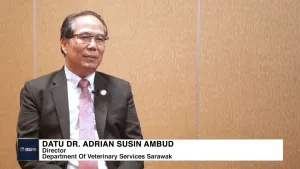
Why red tape is holding governments back—and how to fix it
Excessive bureaucracy can undermine mission outcomes and delay project execution.
Reducing red tape is essential for enabling government agencies to deliver services more efficiently, responsively, and effectively, according to Deloitte’s report.
Excessive bureaucracy can undermine mission outcomes, delay project execution, and erode public trust, the report noted; however, key challenges remain, hindering initiatives to streamline bureaucracy.
One major barrier is outdated laws and regulations, occasionally adapted through one-off changes over decades, that can impede progress.
Leaders have cited organisational and data silos, along with duplicative privacy safeguards, hindering seamless integration and collaboration.
An overly cautious and compliance-heavy culture has also slowed innovation and efforts to streamline processes. On top of regulatory requirements spread across different agencies and levels of government in areas such as permitting, which can create bottlenecks and delays in projects.
Accumulated technical debt in government systems can also complicate efforts to streamline processes and implement new technologies.
Lastly, accelerated changes in technology and business models in regulated sectors make it increasingly difficult for regulators to keep pace. The challenge is to better understand the changes and create rules and processes that continue to protect public interest in this rapidly evolving context.
These challenges often lead to the accumulation of regulatory complexity over time. To respond, many governments are revisiting these frameworks, looking for a balance between accelerating processes and guarding public interests by improving the overall experience of government interactions.
By focusing on key outcome metrics, including time savings and broader societal impacts, the report emphasised that government agencies can streamline requirements and simplify compliance.
By leveraging technology, business tools, and strategies, governments can create a more efficient, transparent, and responsive regulatory environment, reduce red tape, and enhance service delivery.
Amongst these are Artificial Intelligence (AI) and generative AI, which can automate repetitive tasks and processes and speed up administrative workflows.
Norm engineering standardises and simplifies regulatory frameworks, making compliance easier and straightforward for both citizens and businesses.
Enhanced data sharing facilitates seamless information exchange between departments, reducing the need for redundant data collection and processing.
Red tape reduction audits identify and eliminate unnecessary frictions in government, streamlining operations and improving efficiency.
Furthermore, organisational flattening reduces hierarchy, enabling faster decision-making and more direct communication channels.
Human-centred design tools focus on user experience to redesign processes, making them more intuitive and less burdensome for citizens.
And lastly, behavioural insights and science use data-driven insights to design policies and processes and improve overall customer experience.
















